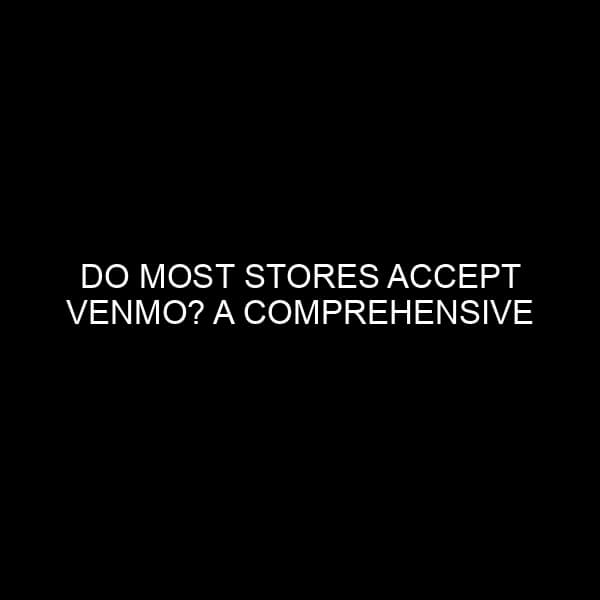Understanding PayPal and Venmo: The Differences Explained
The digital age has paved the way for countless innovative methods to transact, purchase, and interact with money online. Two platforms that stand out prominently in this domain are PayPal and Venmo. As entities that have immensely impacted how we understand and engage in digital payments, these two platforms serve distinct purposes yet originate from the same parent company, PayPal Holdings. To the casual user, the differences might seem subtle, but as someone with a background in the financial market and the banking industry, I can attest to the distinct value proposition each offers. Let’s delve deeper into the fundamental differences between these two payment giants.
A Brief History: From Origins to Today
PayPal: Founded in December 1998 as Confinity, PayPal initially started as a software company for security applications for handheld devices. However, the firm’s direction pivoted, and it shifted towards developing a digital wallet in 1999. After merging with X.com, an online banking company founded by Elon Musk, and subsequent rebranding, PayPal emerged as the digital payment platform we recognize today. It has since grown into a behemoth, catering to millions worldwide, facilitating personal and business transactions.
Venmo: A relative newcomer compared to PayPal, Venmo was founded in 2009 by Andrew Kortina and Iqram Magdon-Ismail. Initially conceived as a way to quickly and effortlessly split bills and pay friends through text messages, Venmo caught the attention of many. The mobile payment service grew in popularity among millennials for its simple interface and social feed. In 2013, Braintree acquired Venmo for $26.2 million. The following year, in a strategic move, PayPal acquired Braintree, making Venmo a part of the PayPal family.
Key Functional Differences
User Experience and Interface
PayPal: Traditionally seen as a more formal platform, PayPal’s interface is designed primarily for business transactions, e-commerce payments, and larger financial transactions. It also offers buyer protection, making it a popular choice for online shopping.
Venmo: Venmo, on the other hand, possesses a user-friendly, socially integrated interface. The social feed feature, where users can see (but not the amount) and comment on friends’ transactions, adds a unique touch to the platform, making money transfers more engaging and social.
Purpose and Usage
PayPal: It’s extensively used for business transactions, e-commerce site integrations, freelancing payments, and global transactions. PayPal provides invoicing tools, the ability to receive payments from customers without PayPal accounts, and even point-of-sale solutions for physical retailers.
Venmo: This platform caters predominantly to peer-to-peer payments among friends or acquaintances. Whether it’s splitting dinner bills, paying a friend back for movie tickets, or chipping in for a group gift, Venmo’s purpose orbits around day-to-day microtransactions.
Transfer Speed and Fees
PayPal: Transfers to banks from PayPal, if not using the instant transfer feature, can take 1-3 business days. When selling goods or services, PayPal charges a fee of 2.9% plus a fixed fee based on the currency of the sale.
Venmo: Venmo provides free transfers to linked bank accounts, which typically arrive within 1-3 business days. However, for a 1% fee (with a minimum fee of $0.25 and a maximum fee of $10), users can opt for an instant transfer to their eligible bank account or debit card. It’s crucial to note that while personal transactions are free, Venmo charges a 1.9% to 2.9% fee (depending on how payment is funded) plus $0.10 for receiving payments for goods or services.
International Transactions
PayPal: PayPal stands out as the platform for international transactions. With the ability to transact in over 100 currencies across more than 200 countries, it’s an invaluable tool for global e-commerce and cross-border payments.
Venmo: As of my last update in September 2021, Venmo is primarily restricted to users within the United States, making it a domestic-centric platform.
Safety and Security
Both PayPal and Venmo prioritize user security. With encryption protocols, fraud detection mechanisms, and additional layers of authentication, both platforms endeavor to keep user data and finances safe. However, given PayPal’s longer tenure and integration with various businesses, it has, over the years, established a more robust reputation in terms of security, especially for larger transactions.
Conclusion
While both PayPal and Venmo serve the primary purpose of facilitating digital payments, their application, user demographics, and functionalities diverge. PayPal, with its expansive reach and comprehensive tools, is tailored more towards business transactions and international payments. Venmo, with its social-centric design and ease of use, suits those looking for quick peer-to-peer domestic transfers.
For businesses, freelancers, and those engaged in e-commerce, PayPal offers a breadth of features and global reach that’s hard to match. However, for millennials and Gen Z users seeking a convenient and social way to manage day-to-day transactions with peers, Venmo emerges as the go-to platform.
As the digital payment landscape continues to evolve, both platforms might see further integrations and feature additions. Still, their core value propositions, as outlined above, will likely continue to guide their respective trajectories.






